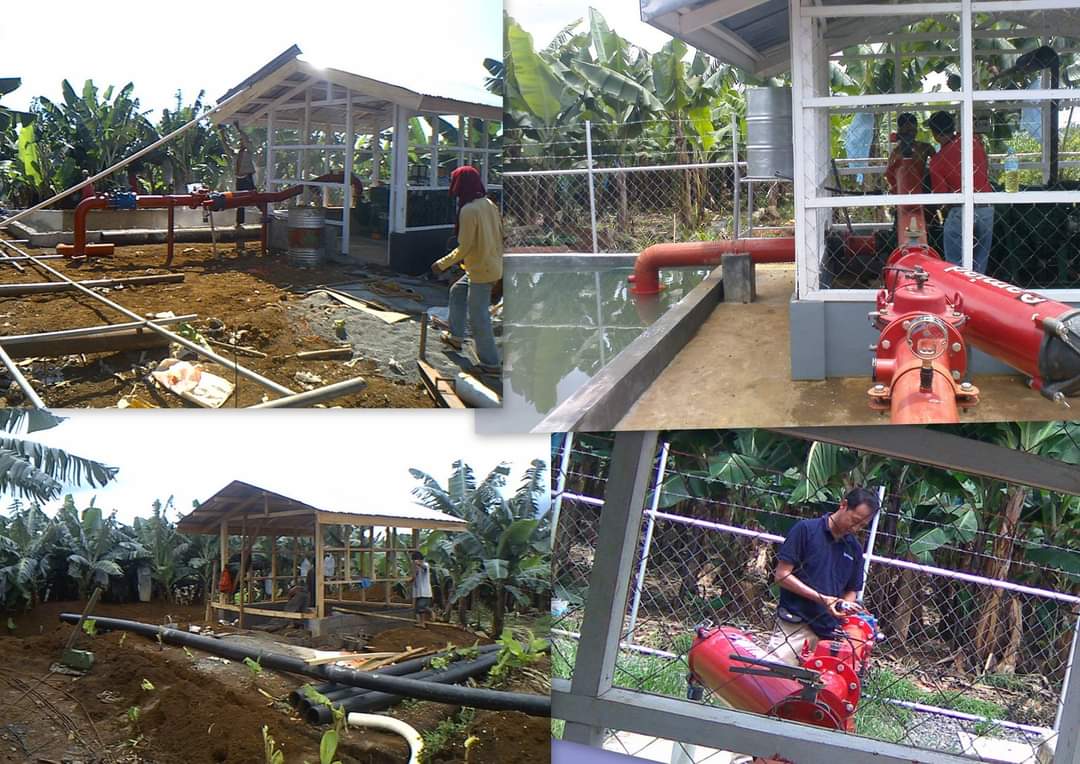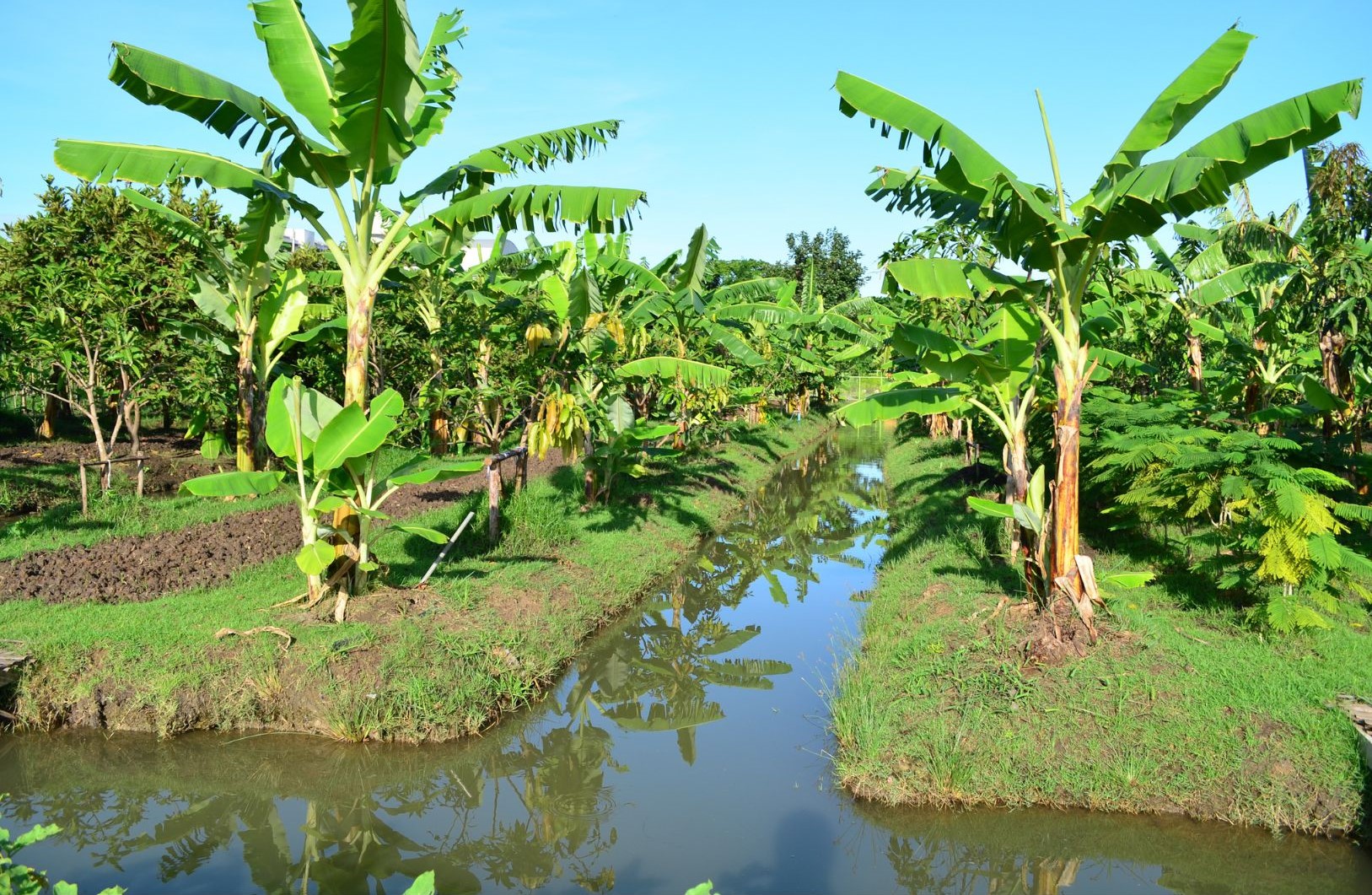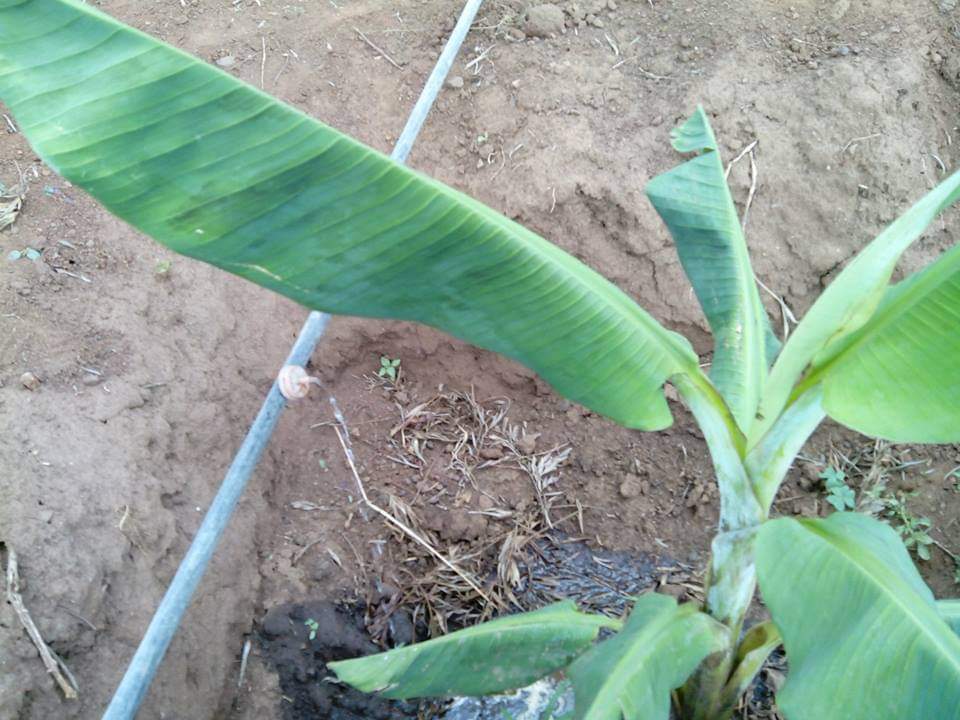Banana Water Requirements & Irrigation Systems

This post is also available in:
This post is also available in:
![]() Español (Spanish)
Español (Spanish) ![]() Français (French)
Français (French) ![]() हिन्दी (Hindi)
हिन्दी (Hindi) ![]() Türkçe (Turkish)
Türkçe (Turkish) ![]() Português (Portuguese (Brazil))
Português (Portuguese (Brazil))
Finding a balance between the water content of the soil and the needs of the plant is the goal of water management in a banana plantation.
Bananas require a plentiful and regular supply of water; crop growth and yields are negatively impacted by water shortages. The capacity for development and fruiting is determined during the establishment period and the early phase of the vegetative period (0–1). At this time, a sufficient supply of water and nutrients is important. Drought stress during the vegetative phase may negatively impact the rate of leaf development, which in turn can impact the number of flowers and the number of hands and bunch output.
With flower differentiation, the second phase of growth begins. However, vegetative development is still possible. Water shortages during this time hinder fruit production and leaf growth.
Water shortages during the period of yield formation (fruit development) have an impact on both the fruit size and quality (poorly filled fingers). A smaller leaf area will slow the fruit filling rate, resulting in older bunches than they appear to be at harvest time and making the fruits more susceptible to premature ripening during storage.
Overwatering and poor drainage are common causes of overwatered banana plants. The plant may even cease growing, and the leaves may turn limp and yellow.
Also, even though these tropical plants benefit from wetness, excessive watering can lead to root rot and other issues.
The signs of an overwatered banana plant include;
- Yellowing leaves
- Dropping leaves
- Softening of the stems
- Powdery mildew
- Turning brown spots on leaves
The signs of under-watering symptoms include;
- Greyish appearance
- Wilting or curling leaves
- Brown distorted
- New growth and basal offset death. (1)
Two main components of Water Management in Banana cultivation
- Drainage
- Irrigation
In areas where there are pronounced dry periods, the use of an efficient irrigation system is recommended.
Methods of Irrigation in Banana
- Surface Irrigation – Include the basin, furrow, or trench irrigation systems.
- Overhead Sprinkler – Small applications at frequent intervals are commonly used in commercial banana plantations.
- Micro-Aspersion/Sprinkler – Light watering like fine rain. A method of gentle irrigation produced by a device that offers multiple modes of droplet delivery, such as overhead irrigation of fruit trees (when tree leaves begin to grow) and pesticide spraying in greenhouses.
- Drip Irrigation – This method allows water to drip gradually to plant roots while conserving water and reducing runoff. (2)
In general, bananas are water-loving plants that need much water, up to 2500 mm or 2000 mm annually or 25 mm per week. Deep irrigation should be offered to assist in salt-leaching the soil during dry weather. Without adequate irrigation, it is typical for banana plants to fail to produce fruits. However, avoid overwatering banana roots because they have low water absorption. Overwatering will lead to root rot. Depending on the season, bananas need an average of 4 to 6 inches of water per month or roughly 1 to 1 1/2 inches per week. Make sure there is no standing water and that the soil drains effectively. Upon field planting, immediately begin irrigation of the plants. Provide enough water while preserving the field’s capacity. It is essential to determine an efficient irrigation method for commercial banana agriculture. Drip irrigation is the greatest technique since it provides several benefits over traditional irrigation. (3)

Drip irrigation is the most economically viable strategy for banana plantations over the long term, according to estimates, providing larger returns than any other technique. According to the interviewed farmers, Drip irrigation has been shown to boost banana yields and quality more than any other irrigation technique. Drip technology also results in significant labor, fertilizer, and water savings.
Drip irrigation will enable you to provide water during dry spells if you grow bananas in an area with sufficient rain. Just doing this will stabilize the banana farms and boost good harvest. Also, it can benefit from an effective fertigation system all year long. With the least amount of work, you can spoon-feed your bananas in a method that eliminates leaching and provides all of the fertilizer to the root zone.
For the farm’s drip irrigation system, harvested rainwater is utilized. Rainwater is transferred to a filter before being used for drip irrigation, where mud particles are filtered and removed before the water is permitted to run via drip pipes for the banana farm. However, there are some Commercial banana farms here in the Philippines that also frequently employ overhead sprinkler systems.
The irrigation system must be maintained and monitored for operational effectiveness to ensure efficient supply. It is documented when irrigation is used, including the time and place, amount of water used or length of irrigation, unit area, and name of the person in charge of the irrigation activity. The Drainage canals (primary, secondary, and tertiary) must be built taking into account the amount of water in the area in order to prevent water logging. Check-dams may be built if thought necessary and in order to control erosion in the region further.
References:
- https://www.ukhouseplants.com/
- https://www.promusa.org/
- https://www.asiafarming.com/banana-farming-information-guide.
Further reading
Banana: Crop History, Nutritional Value and Health Benefits
Banana Plant Information & Environmental Requirements
Banana Plant Care – Commercial Cultivation of Bananas
Soil Requirements and Land Preparation for Bananas
Banana Planting Distances and Support Systems
Banana Water Requirements & Irrigation Systems
Banana Nutrient Requirements and Fertilization Program
Banana Plant Protection – Major Banana Diseases
Banana Plant Protection – Common Pests of Banana Plants









































































